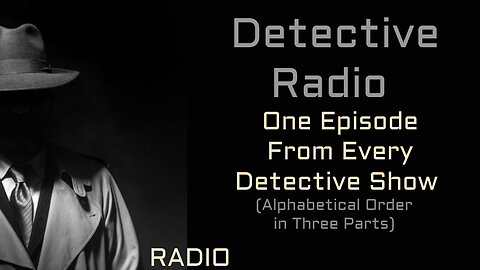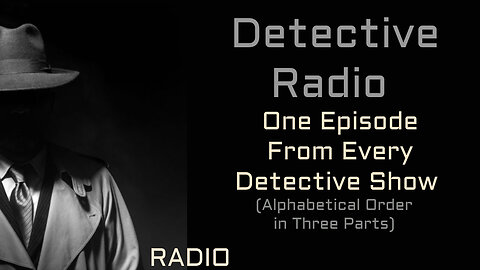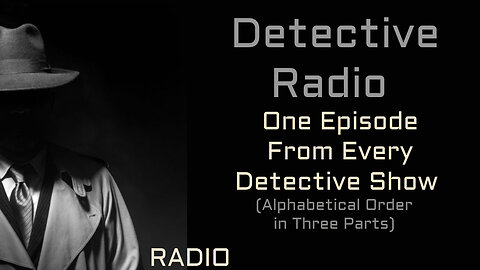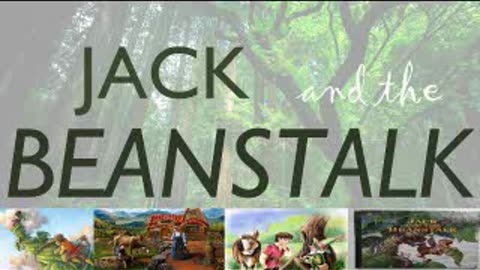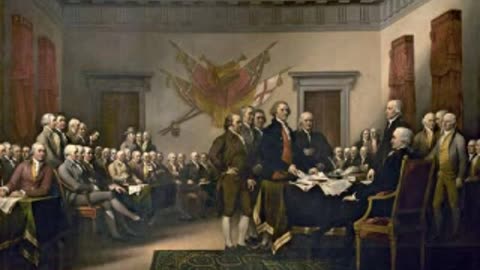
Radio One Off's
26 videos
Updated 1 month ago
Playlist for shows that don't fit into any other playlist..
-
King Solomon's Mines
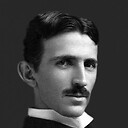 TeslaWirelessRadioKing Solomon's Mines (1885) is a popular novel by the English Victorian adventure writer and fabulist Sir H. Rider Haggard. It tells of an expedition through an unexplored region of Africa by a group of adventurers led by Allan Quatermain, searching for the missing brother of one of the party. It is one of the first English adventure novels set in Africa and is considered to be the genesis of the lost world literary genre. Haggard dedicated this book to his childhood idol Humphry Davy. Background The book was first published in September 1885 amid considerable fanfare, with billboards and posters around London announcing, "The Most Amazing Book Ever Written". It became an immediate best seller. By the late 19th century, explorers were uncovering ancient civilizations and their remains around the world, such as Egypt's Valley of the Kings and the empire of Assyria. Inner Africa remained largely unexplored and King Solomon's Mines, one of the first novels of African adventure published in English, captured the public's imagination. The "King Solomon" of the book's title is the legendary Biblical king renowned both for his wisdom and for his wealth. A number of sites have been suggested as the location of his mines, including the workings at the Timna valley near Eilat. Research published in September 2013 has shown that this site was in use during the 10th century BC as a copper mine possibly by the Edomites, who, the Bible reports, were rivals of and frequently at war with King Solomon. The Bible does refer to King Solomon having sent out, in partnership with his Phoenician allies, trading expeditions along the Red Sea, which brought exotic wares and animals from Africa to Jerusalem. Muslim traders in Sofala told Portuguese travelers in the sixteenth and seventeenth centuries that the region's gold mines belonged to King Solomon and that he built the now-ruined Great Zimbabwe. Haggard knew Africa well, having travelled deep within the continent during the Anglo-Zulu War and the First Boer War, where he had been impressed by South Africa's vast mineral wealth and by the ruins of ancient lost cities, such as Great Zimbabwe, being uncovered. His original Allan Quatermain character was based in large part on Frederick Selous, the British white hunter and explorer of Africa.[8][9] Selous's real-life experiences provided Haggard with the background and inspiration for this and many later stories. Haggard also owed a considerable debt to Joseph Thomson, the Scottish explorer whose book Through Masai Land was published in 1885. Thomson claimed he had terrified warriors in Kenya by taking out his false teeth and claiming to be a magician, just as Captain Good does in King Solomon's Mines. Contemporary James Runciman wrote an article entitled King Plagiarism and His Court, interpreted as accusing Haggard of plagiarism for this. Thomson was so outraged at Haggard's alleged plagiarism that he published a novel of his own, Ulu: an African Romance, which, however, failed to sell. Plot summary "To those who enter the hall of dead"; Walter Paget Allan Quatermain, an adventurer and white hunter based in the African city of Durban, is approached by aristocrat Sir Henry Curtis and his friend Captain Good, seeking his help finding Sir Henry's brother, who was last seen travelling north into the unexplored interior on a quest for the fabled King Solomon's Mines. Quatermain has a map purporting to lead to the mines but had never taken it seriously. He agrees to lead an expedition in return for a share of the treasure, or a stipend for his son if he is killed along the way. He has little hope they will return alive, but reasons that he has already outlived most people in his profession, so dying in this manner at least ensures his son will be provided for. They also take along a native, Umbopa, who seems more regal and well-spoken than most porters of his class, but who is anxious to join the party. Radio Kenneth Colley starred as Allan Quatermain in a 1990 BBC Radio 4 adaptation. A two-part BBC Radio 4 adaptation was broadcast in April 2017 starring Tim McInnerny as Allan Quatermain.129 views
TeslaWirelessRadioKing Solomon's Mines (1885) is a popular novel by the English Victorian adventure writer and fabulist Sir H. Rider Haggard. It tells of an expedition through an unexplored region of Africa by a group of adventurers led by Allan Quatermain, searching for the missing brother of one of the party. It is one of the first English adventure novels set in Africa and is considered to be the genesis of the lost world literary genre. Haggard dedicated this book to his childhood idol Humphry Davy. Background The book was first published in September 1885 amid considerable fanfare, with billboards and posters around London announcing, "The Most Amazing Book Ever Written". It became an immediate best seller. By the late 19th century, explorers were uncovering ancient civilizations and their remains around the world, such as Egypt's Valley of the Kings and the empire of Assyria. Inner Africa remained largely unexplored and King Solomon's Mines, one of the first novels of African adventure published in English, captured the public's imagination. The "King Solomon" of the book's title is the legendary Biblical king renowned both for his wisdom and for his wealth. A number of sites have been suggested as the location of his mines, including the workings at the Timna valley near Eilat. Research published in September 2013 has shown that this site was in use during the 10th century BC as a copper mine possibly by the Edomites, who, the Bible reports, were rivals of and frequently at war with King Solomon. The Bible does refer to King Solomon having sent out, in partnership with his Phoenician allies, trading expeditions along the Red Sea, which brought exotic wares and animals from Africa to Jerusalem. Muslim traders in Sofala told Portuguese travelers in the sixteenth and seventeenth centuries that the region's gold mines belonged to King Solomon and that he built the now-ruined Great Zimbabwe. Haggard knew Africa well, having travelled deep within the continent during the Anglo-Zulu War and the First Boer War, where he had been impressed by South Africa's vast mineral wealth and by the ruins of ancient lost cities, such as Great Zimbabwe, being uncovered. His original Allan Quatermain character was based in large part on Frederick Selous, the British white hunter and explorer of Africa.[8][9] Selous's real-life experiences provided Haggard with the background and inspiration for this and many later stories. Haggard also owed a considerable debt to Joseph Thomson, the Scottish explorer whose book Through Masai Land was published in 1885. Thomson claimed he had terrified warriors in Kenya by taking out his false teeth and claiming to be a magician, just as Captain Good does in King Solomon's Mines. Contemporary James Runciman wrote an article entitled King Plagiarism and His Court, interpreted as accusing Haggard of plagiarism for this. Thomson was so outraged at Haggard's alleged plagiarism that he published a novel of his own, Ulu: an African Romance, which, however, failed to sell. Plot summary "To those who enter the hall of dead"; Walter Paget Allan Quatermain, an adventurer and white hunter based in the African city of Durban, is approached by aristocrat Sir Henry Curtis and his friend Captain Good, seeking his help finding Sir Henry's brother, who was last seen travelling north into the unexplored interior on a quest for the fabled King Solomon's Mines. Quatermain has a map purporting to lead to the mines but had never taken it seriously. He agrees to lead an expedition in return for a share of the treasure, or a stipend for his son if he is killed along the way. He has little hope they will return alive, but reasons that he has already outlived most people in his profession, so dying in this manner at least ensures his son will be provided for. They also take along a native, Umbopa, who seems more regal and well-spoken than most porters of his class, but who is anxious to join the party. Radio Kenneth Colley starred as Allan Quatermain in a 1990 BBC Radio 4 adaptation. A two-part BBC Radio 4 adaptation was broadcast in April 2017 starring Tim McInnerny as Allan Quatermain.129 views -
Detective Show Radio (One Ep of Every Show) Vol 1
 TeslaWirelessRadioThis is a collection of all the old radio detective shows. There is a single episode of each show. They are in alphabetical order and their are 3 parts total.44 views
TeslaWirelessRadioThis is a collection of all the old radio detective shows. There is a single episode of each show. They are in alphabetical order and their are 3 parts total.44 views -
Detective Show Radio (One Ep of Every Show) Vol 2
 TeslaWirelessRadioThis is a collection of all the old radio detective shows. There is a single episode of each show. They are in alphabetical order and their are 3 parts total.46 views
TeslaWirelessRadioThis is a collection of all the old radio detective shows. There is a single episode of each show. They are in alphabetical order and their are 3 parts total.46 views -
Detective Radio (One Ep of Every Detective Show) Vol 3
 TeslaWirelessRadioThis is a collection of all the old radio detective shows. There is a single episode of each show. They are in alphabetical order and in 3 parts. Let me know if I missed any.43 views
TeslaWirelessRadioThis is a collection of all the old radio detective shows. There is a single episode of each show. They are in alphabetical order and in 3 parts. Let me know if I missed any.43 views -
She - A History of Adventure by H. Rider Haggard
 TeslaWirelessRadioShe – H. Rider Haggard Ludwig Holly and his ward Leo's quest for the truth behind legend of Leo's ancestry takes them to Africa. CAST: Ludwig Holly ...... Tim McInnerny Leo ...... Oliver Chris Ayesha ...... Mia Soteriou Job ...... Howard Coggins Billali ...... Ben Onwukwe Amenartas/Ustane ...... Janice Acquah Vincey ...... Tom Sherman Agarah ...... Damian Lynch Young Leo ...... Oliver Baynham Composed music by Elizabeth Purnell. Producer: Sara Davies First broadcast on BBC Radio 4 in 2006. 1. Episode 1 Ludwig Holly and his ward Leo's quest for the truth behind legend of Leo's ancestry takes them to Africa. Here they find Ayesha, 2000 years old but beautiful beyond all description, despotically ruling her secret kingdom. 2. Episode 2 Ayesha, the queen whose beauty enthrals and terrifies all who see her, believes Leo to be the lover for whom she has waited 2000 years. She takes Leo and his guardian Holly deep into the mountains to the Pillar of Life. Hattie Naylor's adaptation of H Rider Haggard's 19th century best-seller set in a mysterious African kingdom explores the complex themes of imperial arrogance, sexual obsession, power and isolation that lie behind the high adventure. She, subtitled A History of Adventure, is a novel by the English writer H. Rider Haggard, published in book form in 1887 following serialization in The Graphic magazine between October 1886 and January 1887. She was extraordinarily popular upon its release and has never been out of print. The story is a first-person narrative which follows the journey of Horace Holly and his ward Leo Vincey to a lost kingdom in the African interior. They encounter a native people and a mysterious white queen named Ayesha who reigns as the all-powerful "She" or "She-who-must-be-obeyed". Haggard developed many of the conventions of the lost world genre which countless authors have emulated. Haggard was "part of the literary reaction against domestic realism that has been called a romance revival." Other writers following this trend were Robert Louis Stevenson, George MacDonald, and William Morris. Haggard was inspired by his experiences living in South Africa for seven years (1875–1882) working at the highest levels of the British colonial administration. In the figure of She, the novel notably explored themes of female authority and feminine behavior. Its representation of womanhood has received both praise and criticism. Plot Horace Holly, a young Cambridge University professor, is visited by Vincey, a colleague who, convinced that he will soon die, charges him with the task of raising his young son, Leo. He gives Holly a locked iron box, with instructions that it is not to be opened until Leo's 25th birthday. Holly agrees. Vincey is found dead the next day, and Holly raises the boy as his own. When the box is opened they discover the ancient "Sherd of Amenartas". Holly, Leo, and their servant, Job, follow instructions on the Sherd and travel to eastern Africa. After surviving a shipwreck, they and their Arab captain, Mahomed, journey into the African interior where they are captured by the savage Amahagger people. The adventurers learn that the natives are ruled by a fearsome white queen who is worshipped as Hiya or "She-who-must-be-obeyed".62 views
TeslaWirelessRadioShe – H. Rider Haggard Ludwig Holly and his ward Leo's quest for the truth behind legend of Leo's ancestry takes them to Africa. CAST: Ludwig Holly ...... Tim McInnerny Leo ...... Oliver Chris Ayesha ...... Mia Soteriou Job ...... Howard Coggins Billali ...... Ben Onwukwe Amenartas/Ustane ...... Janice Acquah Vincey ...... Tom Sherman Agarah ...... Damian Lynch Young Leo ...... Oliver Baynham Composed music by Elizabeth Purnell. Producer: Sara Davies First broadcast on BBC Radio 4 in 2006. 1. Episode 1 Ludwig Holly and his ward Leo's quest for the truth behind legend of Leo's ancestry takes them to Africa. Here they find Ayesha, 2000 years old but beautiful beyond all description, despotically ruling her secret kingdom. 2. Episode 2 Ayesha, the queen whose beauty enthrals and terrifies all who see her, believes Leo to be the lover for whom she has waited 2000 years. She takes Leo and his guardian Holly deep into the mountains to the Pillar of Life. Hattie Naylor's adaptation of H Rider Haggard's 19th century best-seller set in a mysterious African kingdom explores the complex themes of imperial arrogance, sexual obsession, power and isolation that lie behind the high adventure. She, subtitled A History of Adventure, is a novel by the English writer H. Rider Haggard, published in book form in 1887 following serialization in The Graphic magazine between October 1886 and January 1887. She was extraordinarily popular upon its release and has never been out of print. The story is a first-person narrative which follows the journey of Horace Holly and his ward Leo Vincey to a lost kingdom in the African interior. They encounter a native people and a mysterious white queen named Ayesha who reigns as the all-powerful "She" or "She-who-must-be-obeyed". Haggard developed many of the conventions of the lost world genre which countless authors have emulated. Haggard was "part of the literary reaction against domestic realism that has been called a romance revival." Other writers following this trend were Robert Louis Stevenson, George MacDonald, and William Morris. Haggard was inspired by his experiences living in South Africa for seven years (1875–1882) working at the highest levels of the British colonial administration. In the figure of She, the novel notably explored themes of female authority and feminine behavior. Its representation of womanhood has received both praise and criticism. Plot Horace Holly, a young Cambridge University professor, is visited by Vincey, a colleague who, convinced that he will soon die, charges him with the task of raising his young son, Leo. He gives Holly a locked iron box, with instructions that it is not to be opened until Leo's 25th birthday. Holly agrees. Vincey is found dead the next day, and Holly raises the boy as his own. When the box is opened they discover the ancient "Sherd of Amenartas". Holly, Leo, and their servant, Job, follow instructions on the Sherd and travel to eastern Africa. After surviving a shipwreck, they and their Arab captain, Mahomed, journey into the African interior where they are captured by the savage Amahagger people. The adventurers learn that the natives are ruled by a fearsome white queen who is worshipped as Hiya or "She-who-must-be-obeyed".62 views -
The Raven by Edgar Allan Poe
 TeslaWirelessRadioThe Raven" is a narrative poem by American writer Edgar Allan Poe. First published in January 1845, the poem is often noted for its musicality, stylized language, and supernatural atmosphere. Sitting on a bust of Pallas, the raven seems to further distress the protagonist with its constant repetition of the word "Nevermore". The poem makes use of folk, mythological, religious, and classical references. Poe claimed to have written the poem logically and methodically, with the intention to create a poem that would appeal to both critical and popular tastes, as he explained in his 1846 follow-up essay, "The Philosophy of Composition". The poem was inspired in part by a talking raven in the novel Barnaby Rudge: A Tale of the Riots of Eighty by Charles Dickens.[1] Poe borrows the complex rhythm and meter of Elizabeth Barrett's poem "Lady Geraldine's Courtship", and makes use of internal rhyme as well as alliteration throughout. "The Raven" was first attributed to Poe in print in the New York Evening Mirror on January 29, 1845. Its publication made Poe popular in his lifetime, although it did not bring him much financial success. The poem was soon reprinted, parodied, and illustrated. Critical opinion is divided as to the poem's literary status, but it nevertheless remains one of the most famous poems ever written The Raven byEdgar Allan Poe Once upon a midnight dreary, while I pondered, weak and weary, Over many a quaint and curious volume of forgotten lore— While I nodded, nearly napping, suddenly there came a tapping, As of some one gently rapping, rapping at my chamber door— “ ’Tis some visiter,” I muttered, “tapping at my chamber door— Only this and nothing more.” Ah, distinctly I remember it was in the bleak December; And each separate dying ember wrought its ghost upon the floor. Eagerly I wished the morrow;—vainly I had sought to borrow From my books surcease of sorrow—sorrow for the lost Lenore— For the rare and radiant maiden whom the angels name Lenore— Nameless here for evermore. And the silken, sad, uncertain rustling of each purple curtain Thrilled me—filled me with fantastic terrors never felt before; So that now, to still the beating of my heart, I stood repeating “ ’Tis some visiter entreating entrance at my chamber door— Some late visiter entreating entrance at my chamber door;— This it is and nothing more.” Presently my soul grew stronger; hesitating then no longer, ”Sir,” said I, “or Madam, truly your forgiveness I implore; But the fact is I was napping, and so gently you came rapping, And so faintly you came tapping, tapping at my chamber door, That I scarce was sure I heard you”—here I opened wide the door;— Continued………………….. The raven, Edgar Allan Poe, the raven old radio, old radio, old time radio the raven, poetry, tesla wireless radio,22 views
TeslaWirelessRadioThe Raven" is a narrative poem by American writer Edgar Allan Poe. First published in January 1845, the poem is often noted for its musicality, stylized language, and supernatural atmosphere. Sitting on a bust of Pallas, the raven seems to further distress the protagonist with its constant repetition of the word "Nevermore". The poem makes use of folk, mythological, religious, and classical references. Poe claimed to have written the poem logically and methodically, with the intention to create a poem that would appeal to both critical and popular tastes, as he explained in his 1846 follow-up essay, "The Philosophy of Composition". The poem was inspired in part by a talking raven in the novel Barnaby Rudge: A Tale of the Riots of Eighty by Charles Dickens.[1] Poe borrows the complex rhythm and meter of Elizabeth Barrett's poem "Lady Geraldine's Courtship", and makes use of internal rhyme as well as alliteration throughout. "The Raven" was first attributed to Poe in print in the New York Evening Mirror on January 29, 1845. Its publication made Poe popular in his lifetime, although it did not bring him much financial success. The poem was soon reprinted, parodied, and illustrated. Critical opinion is divided as to the poem's literary status, but it nevertheless remains one of the most famous poems ever written The Raven byEdgar Allan Poe Once upon a midnight dreary, while I pondered, weak and weary, Over many a quaint and curious volume of forgotten lore— While I nodded, nearly napping, suddenly there came a tapping, As of some one gently rapping, rapping at my chamber door— “ ’Tis some visiter,” I muttered, “tapping at my chamber door— Only this and nothing more.” Ah, distinctly I remember it was in the bleak December; And each separate dying ember wrought its ghost upon the floor. Eagerly I wished the morrow;—vainly I had sought to borrow From my books surcease of sorrow—sorrow for the lost Lenore— For the rare and radiant maiden whom the angels name Lenore— Nameless here for evermore. And the silken, sad, uncertain rustling of each purple curtain Thrilled me—filled me with fantastic terrors never felt before; So that now, to still the beating of my heart, I stood repeating “ ’Tis some visiter entreating entrance at my chamber door— Some late visiter entreating entrance at my chamber door;— This it is and nothing more.” Presently my soul grew stronger; hesitating then no longer, ”Sir,” said I, “or Madam, truly your forgiveness I implore; But the fact is I was napping, and so gently you came rapping, And so faintly you came tapping, tapping at my chamber door, That I scarce was sure I heard you”—here I opened wide the door;— Continued………………….. The raven, Edgar Allan Poe, the raven old radio, old radio, old time radio the raven, poetry, tesla wireless radio,22 views -
Jack & the Beanstalk (Radio Version)
 TeslaWirelessRadioOnce upon a time there lived a poor widow and her son Jack. One day, Jack’s mother told him to sell their only cow. Jack went to the market and on the way, he met a man who wanted to buy his cow. Jack asked, “What will you give me in return for my cow?” The man answered, “I will give you five magic beans!” Jack took the magic beans and gave the man the cow. But when he reached home, Jack’s mother was very angry. She said, “You fool! He took away your cow and gave you some beans!” She threw the beans out of the window. Jack was very sad and went to sleep without dinner. The next day, when Jack woke up in the morning and looked out of the window, he saw that a huge beanstalk had grown from his magic beans! He climbed up the beanstalk and reached a kingdom in the sky. There lived a giant and his wife. Jack went inside the house and found the giant’s wife in the kitchen. Jack said, “Could you please give me something to eat? I am so hungry!” The kind wife gave him bread and some milk. While he was eating, the giant came home. The giant was very big and looked very fearsome. Jack was terrified and went and hid inside. The giant cried, “Fee-fi-fo-fum, I smell the blood of an Englishman. Be he alive, or be he dead, I’ll grind his bones to make my bread!” The wife said, “There is no boy in here!” So, the giant ate his food and then went to his room. He took out his sacks of gold coins, counted them and kept them aside. Then he went to sleep. In the night, Jack crept out of his hiding place, took one sack of gold coins and climbed down the beanstalk. At home, he gave the coins to his mother. His mother was very happy, and they lived well for some time. Jack and the Beanstalk Fee Fi Fo Fum! Climbed the beanstalk and went to the giant’s house again. Once again, Jack asked the giant’s wife for food, but while he was eating the giant returned. Jack leapt up in fright and went and hid under the bed. The giant cried, “Fee-fifo-fum, I smell the blood of an Englishman. Be he alive, or be he dead, I’ll grind his bones to make my bread!” The wife said, “There is no boy in here!” The giant ate his food and went to his room. There, he took out a hen. He shouted, “Lay!” and the hen laid a golden egg. When the giant fell asleep, Jack took the hen and climbed down the beanstalk. Jack’s mother was very happy with him. After some days, Jack once again climbed the beanstalk and went to the giant’s castle. For the third time, Jack met the giant’s wife and asked for some food. Once again, the giant’s wife gave him bread and milk. But while Jack was eating, the giant came home. “Fee-fi-fo-fum, I smell the blood of an Englishman. Be he alive, or be he dead, I’ll grind his bones to make my bread!” cried the giant. “Don’t be silly! There is no boy in here!” said his wife. The giant had a magical harp that could play beautiful songs. While the giant slept, Jack took the harp and was about to leave. Suddenly, the magic harp cried, “Help master! A boy is stealing me!” The giant woke up and saw Jack with the harp. Furious, he ran after Jack. But Jack was too fast for him. He ran down the beanstalk and reached home. The giant followed him down. Jack quickly ran inside his house and fetched an axe. He began to chop the beanstalk. The giant fell and died. Jack and his mother were now very rich, and they lived happily ever after.63 views
TeslaWirelessRadioOnce upon a time there lived a poor widow and her son Jack. One day, Jack’s mother told him to sell their only cow. Jack went to the market and on the way, he met a man who wanted to buy his cow. Jack asked, “What will you give me in return for my cow?” The man answered, “I will give you five magic beans!” Jack took the magic beans and gave the man the cow. But when he reached home, Jack’s mother was very angry. She said, “You fool! He took away your cow and gave you some beans!” She threw the beans out of the window. Jack was very sad and went to sleep without dinner. The next day, when Jack woke up in the morning and looked out of the window, he saw that a huge beanstalk had grown from his magic beans! He climbed up the beanstalk and reached a kingdom in the sky. There lived a giant and his wife. Jack went inside the house and found the giant’s wife in the kitchen. Jack said, “Could you please give me something to eat? I am so hungry!” The kind wife gave him bread and some milk. While he was eating, the giant came home. The giant was very big and looked very fearsome. Jack was terrified and went and hid inside. The giant cried, “Fee-fi-fo-fum, I smell the blood of an Englishman. Be he alive, or be he dead, I’ll grind his bones to make my bread!” The wife said, “There is no boy in here!” So, the giant ate his food and then went to his room. He took out his sacks of gold coins, counted them and kept them aside. Then he went to sleep. In the night, Jack crept out of his hiding place, took one sack of gold coins and climbed down the beanstalk. At home, he gave the coins to his mother. His mother was very happy, and they lived well for some time. Jack and the Beanstalk Fee Fi Fo Fum! Climbed the beanstalk and went to the giant’s house again. Once again, Jack asked the giant’s wife for food, but while he was eating the giant returned. Jack leapt up in fright and went and hid under the bed. The giant cried, “Fee-fifo-fum, I smell the blood of an Englishman. Be he alive, or be he dead, I’ll grind his bones to make my bread!” The wife said, “There is no boy in here!” The giant ate his food and went to his room. There, he took out a hen. He shouted, “Lay!” and the hen laid a golden egg. When the giant fell asleep, Jack took the hen and climbed down the beanstalk. Jack’s mother was very happy with him. After some days, Jack once again climbed the beanstalk and went to the giant’s castle. For the third time, Jack met the giant’s wife and asked for some food. Once again, the giant’s wife gave him bread and milk. But while Jack was eating, the giant came home. “Fee-fi-fo-fum, I smell the blood of an Englishman. Be he alive, or be he dead, I’ll grind his bones to make my bread!” cried the giant. “Don’t be silly! There is no boy in here!” said his wife. The giant had a magical harp that could play beautiful songs. While the giant slept, Jack took the harp and was about to leave. Suddenly, the magic harp cried, “Help master! A boy is stealing me!” The giant woke up and saw Jack with the harp. Furious, he ran after Jack. But Jack was too fast for him. He ran down the beanstalk and reached home. The giant followed him down. Jack quickly ran inside his house and fetched an axe. He began to chop the beanstalk. The giant fell and died. Jack and his mother were now very rich, and they lived happily ever after.63 views -
The Declaration of Independence
 TeslaWirelessRadioDeclaration of Independence, in U.S. history, document that was approved by the Continental Congress on July 4, 1776, and that announced the separation of 13 North American British colonies from Great Britain. It explained why the Congress on July 2 “unanimously” by the votes of 12 colonies (with New York abstaining) had resolved that “these United Colonies are, and of right ought to be Free and Independent States.” Accordingly, the day on which final separation was officially voted was July 2, although the 4th, the day on which the Declaration of Independence was adopted, has always been celebrated in the United States as the great national holiday—the Fourth of July, or Independence Day.43 views
TeslaWirelessRadioDeclaration of Independence, in U.S. history, document that was approved by the Continental Congress on July 4, 1776, and that announced the separation of 13 North American British colonies from Great Britain. It explained why the Congress on July 2 “unanimously” by the votes of 12 colonies (with New York abstaining) had resolved that “these United Colonies are, and of right ought to be Free and Independent States.” Accordingly, the day on which final separation was officially voted was July 2, although the 4th, the day on which the Declaration of Independence was adopted, has always been celebrated in the United States as the great national holiday—the Fourth of July, or Independence Day.43 views -
The Great Gatsby (BBC Radio) 2012
 TeslaWirelessRadioFirst broadcast: Sun 6th May 2012, 15:00 on BBC Radio 4 FM F. Scott Fitzgerald's seminal novel, a portrait of the Jazz Age in all of its decadence and excess, is perhaps the greatest book on the fallibility of the American dream. Nick Carraway arrives in Long Island and is reacquainted with his distant cousin, Daisy Buchanan. He falls in with her wealthy crowd. His neighbor, the self-made and self-invented millionaire, Gatsby, is the man who has everything - but one thing will always be out of his reach. Nick has fallen in with the wealthy crowd on Long Island. His neighbor, Gatsby, asks Nick to engineer a meeting with his lost love, Nick's cousin, Daisy. Dramatized by Robert Forrest [Two episodes combined as one] Nick ..... Bryan Dick Gatsby ..... Andrew Scott Tom ..... Andrew Buchan Daisy ..... Pippa Bennett-Warner Jordan ..... Melody Grove Wolfsheim ..... Karl Johnson Klipspringer ..... Sam Dale Wilson ..... Gerard McDermott Myrtle ..... Susie Riddell Catherine ..... Tracy Wiles Chester ..... Patrick Brennan Lucille ..... Christine Absalom Alice ..... Amaka Okafor Director: Gaynor Macfarlane111 views
TeslaWirelessRadioFirst broadcast: Sun 6th May 2012, 15:00 on BBC Radio 4 FM F. Scott Fitzgerald's seminal novel, a portrait of the Jazz Age in all of its decadence and excess, is perhaps the greatest book on the fallibility of the American dream. Nick Carraway arrives in Long Island and is reacquainted with his distant cousin, Daisy Buchanan. He falls in with her wealthy crowd. His neighbor, the self-made and self-invented millionaire, Gatsby, is the man who has everything - but one thing will always be out of his reach. Nick has fallen in with the wealthy crowd on Long Island. His neighbor, Gatsby, asks Nick to engineer a meeting with his lost love, Nick's cousin, Daisy. Dramatized by Robert Forrest [Two episodes combined as one] Nick ..... Bryan Dick Gatsby ..... Andrew Scott Tom ..... Andrew Buchan Daisy ..... Pippa Bennett-Warner Jordan ..... Melody Grove Wolfsheim ..... Karl Johnson Klipspringer ..... Sam Dale Wilson ..... Gerard McDermott Myrtle ..... Susie Riddell Catherine ..... Tracy Wiles Chester ..... Patrick Brennan Lucille ..... Christine Absalom Alice ..... Amaka Okafor Director: Gaynor Macfarlane111 views -
F. Scott Fitzgerald - The Lost Stories
 TeslaWirelessRadioThe Lost Stories (Omnibus) A selection of stories taken from a collection of previously unpublished work by F Scott Fitzgerald, I'd Die For You: and Other Lost Stories. 01 Introduction & Thank You for the Light Read by Laurel Lefkow and Karen Bartke 02 The Couple Finn Den Hertog reads a previously unpublished tale about the disintegration of a young marriage. 03 Salute to Lucy and Elsie Stuart Milligan reads a previously unpublished story about honor, morals and the gulf between generations. Romance, parties, cocktails, and glamour - as a young writer in the 1920s F Scott Fitzgerald gave the magazines what they wanted. He had little choice; short stories were his bread and butter. But as the author matured, he yearned to explore darker territory. This desire wasn't cushioned by wealth; The Great Gatsby hadn't sold well and as the Depression crunched in the early 30s, Fitzgerald was hit by large medical bills for both him and his wife Zelda. Despite the financial pressures he resisted the easy censorship requested by editors, who balked at Fitzgerald's portrayal of confusing generational freedoms, sex before marriage, divorce and working women. Growing increasingly uncompromising about deletions and sanitizations, Fitzgerald preferred to let these stories lie in wait until their time came. Producer: Eilidh McCreadie15 views 1 comment
TeslaWirelessRadioThe Lost Stories (Omnibus) A selection of stories taken from a collection of previously unpublished work by F Scott Fitzgerald, I'd Die For You: and Other Lost Stories. 01 Introduction & Thank You for the Light Read by Laurel Lefkow and Karen Bartke 02 The Couple Finn Den Hertog reads a previously unpublished tale about the disintegration of a young marriage. 03 Salute to Lucy and Elsie Stuart Milligan reads a previously unpublished story about honor, morals and the gulf between generations. Romance, parties, cocktails, and glamour - as a young writer in the 1920s F Scott Fitzgerald gave the magazines what they wanted. He had little choice; short stories were his bread and butter. But as the author matured, he yearned to explore darker territory. This desire wasn't cushioned by wealth; The Great Gatsby hadn't sold well and as the Depression crunched in the early 30s, Fitzgerald was hit by large medical bills for both him and his wife Zelda. Despite the financial pressures he resisted the easy censorship requested by editors, who balked at Fitzgerald's portrayal of confusing generational freedoms, sex before marriage, divorce and working women. Growing increasingly uncompromising about deletions and sanitizations, Fitzgerald preferred to let these stories lie in wait until their time came. Producer: Eilidh McCreadie15 views 1 comment
